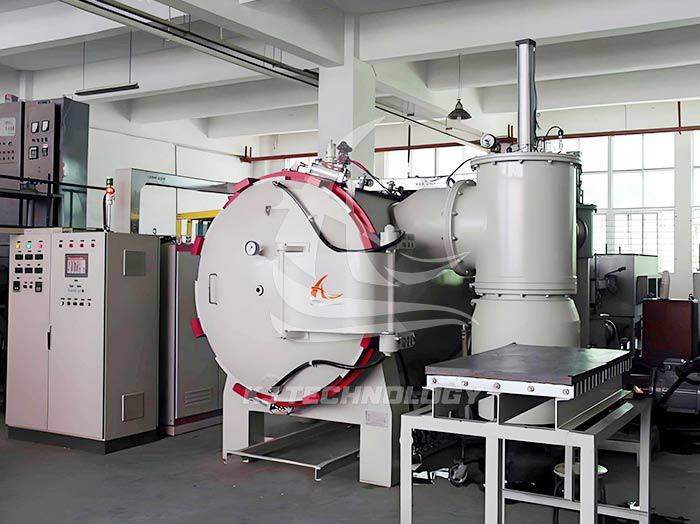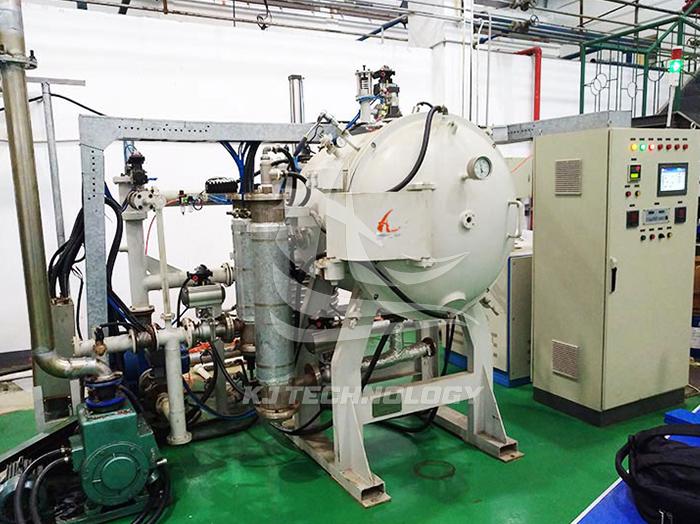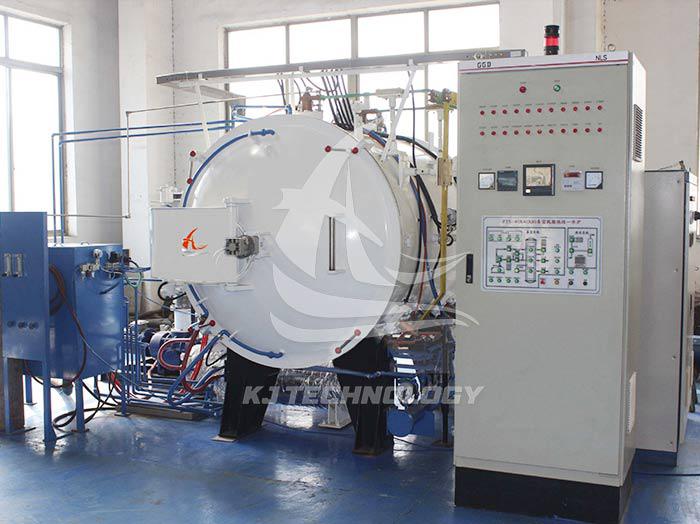What processes are suitable for experimental vacuum hot pressing furnaces?
 09-22-2025 Author: KJ technology
09-22-2025 Author: KJ technology
The experimental vacuum hot press furnace is suitable for various processes that require densification, compounding, or special atmosphere treatment by combining vacuum environment, high-temperature heating, and mechanical pressure. The following are its main applicable processes and specific application scenarios:
1. Powder metallurgy sintering
Preparation of Hard Alloy
Application materials: Metal ceramic powders such as tungsten carbide (WC) and cobalt (Co).
Process characteristics: Sintering is carried out at 1400-1500 ℃ and 20-30 MPa pressure, with a vacuum environment to prevent cobalt phase oxidation and achieve high hardness and wear resistance.
Typical products: cutting tools, molds, mining drill bits, etc.
cermet
Application materials: TiC/Ni, Ti (C, N)/Co, etc.
Process features: Promote the interface bonding between carbides and metal bonding phases through hot pressing, improve material toughness and thermal shock resistance.
Typical products: cutting tools, wear-resistant parts.
2. Densification of ceramic materials
High performance structural ceramics
Application materials: Silicon carbide (SiC), silicon nitride (Si ∝ N ₄), aluminum oxide (Al ₂ O ∝), etc.
Process characteristics:
Low temperature sintering: Hot pressing can lower the sintering temperature (such as SiC from 2200 ℃ to 1900 ℃) and suppress grain coarsening.
High density: Pressure promotes particle rearrangement and grain boundary diffusion, resulting in a higher relative density.
Typical products: bearings, sealing rings, turbine rotors, etc.
Preparation of functional ceramics
Application materials: transparent alumina, piezoelectric ceramics (PZT), magnetic ceramics (YIG), etc.
Process characteristics:
Transparent alumina: Hot pressed in a hydrogen atmosphere to eliminate pores, with a transmittance of over 90%.
Piezoelectric ceramics: Pressure promotes grain orientation and arrangement, increasing the piezoelectric coefficient (d ∝).
Typical products: high-pressure sodium lamp tubes, ultrasonic transducers, filters, etc.
3. Ceramic metal composite materials
Solid phase diffusion bonding
Application materials: AlN/Cu, Si ∝ N ₄/Al, etc.
Process characteristics:
Interface bonding: Under high temperature and high pressure, atoms diffuse to form intermetallic compounds (such as Cu ∝ Al), with a bonding strength of 50-100 MPa.
Thermal compatibility: By adjusting the connection temperature and pressure, the difference in thermal expansion coefficients between ceramics and metals can be alleviated.
Typical products: high-power LED heat dissipation substrate, IGBT module packaging.
Metal based ceramic composite materials
Application materials: Al ₂ O3/Al, SiC/Al, etc.
Process characteristics:
In situ reaction: During the hot pressing process, the metal reacts with the ceramic to form a reinforcing phase (such as Al ₄ C ∝).
Uniform dispersion: Pressure promotes the uniform distribution of ceramic particles in the metal matrix, improving wear resistance and thermal conductivity.
Typical products: piston rings, electronic packaging materials.
4. Nano material sintering
nano-ceramic
Application materials: Nano TiO ₂, Nano ZrO ₂, etc.
Process characteristics:
Inhibiting grain growth: The hot pressing sintering temperature is 200-400 ℃ lower than atmospheric pressure, and the grain size can be controlled.
High hardness: Nano ZrO ₂ ceramics have higher hardness.
Typical products: Biomedical implants, high-precision bearings.
nanometal
Application materials: nano copper, nano silver, etc.
Process characteristics:
Low temperature densification: Hot pressing promotes the neck shaped growth of nanoparticles, avoiding high-temperature melting.
High conductivity: The electrical resistivity of nano copper wire material decreases.
Typical products: microelectronic interconnect materials, flexible electrodes.
5.Diffusion welding and connection
Heterogeneous material connection
Application materials: ceramic ceramic, ceramic metal, metal metal, etc.
Process characteristics:
Solder free connection: relying on atomic diffusion to form metallurgical bonding, avoiding solder melting point limitations.
High temperature strength: The connecting joint maintains high strength even at high temperatures.
Typical products: aviation engine turbine blades, nuclear reactor fuel cladding.
Multi layer structure composite
Application materials: Multi layer ceramic capacitors (MLCC), solid-state battery electrolyte membranes, etc.
Process characteristics:
Interlayer bonding: Hot pressing promotes the interface bonding between the ceramic layer and the electrode layer, reducing the risk of delamination.
Miniaturization: Ultra thin ceramic layers with a thickness less than 1 μ m can be prepared to meet high-capacity requirements.
Typical products: 5G communication filters, solid-state electrolytes for lithium-ion batteries.
6. Special atmosphere treatment process
Protecting the atmosphere during sintering
Application gases: nitrogen (N ₂), argon (Ar), hydrogen (H ₂), etc.
Process characteristics:
Nitride ceramics: Sintering Si ∝ N ₄ in N ₂ atmosphere promotes nitriding reaction and improves material strength.
Reducing atmosphere: H ₂ atmosphere can reduce oxide impurities in ceramics and improve purity.
Typical products: silicon nitride bearing balls, high-purity alumina crucibles.
Reaction Sintering
Application materials: SiC/C, B ₄ C/Al, etc.
Process characteristics:
In situ reaction: During the hot pressing process, carbon reacts with silicon to form SiC, or boron reacts with aluminum to form B ₄ C.
Low porosity: The reaction products fill the pores, resulting in higher density.
Typical products: bulletproof armor, nuclear reactor shielding materials.








